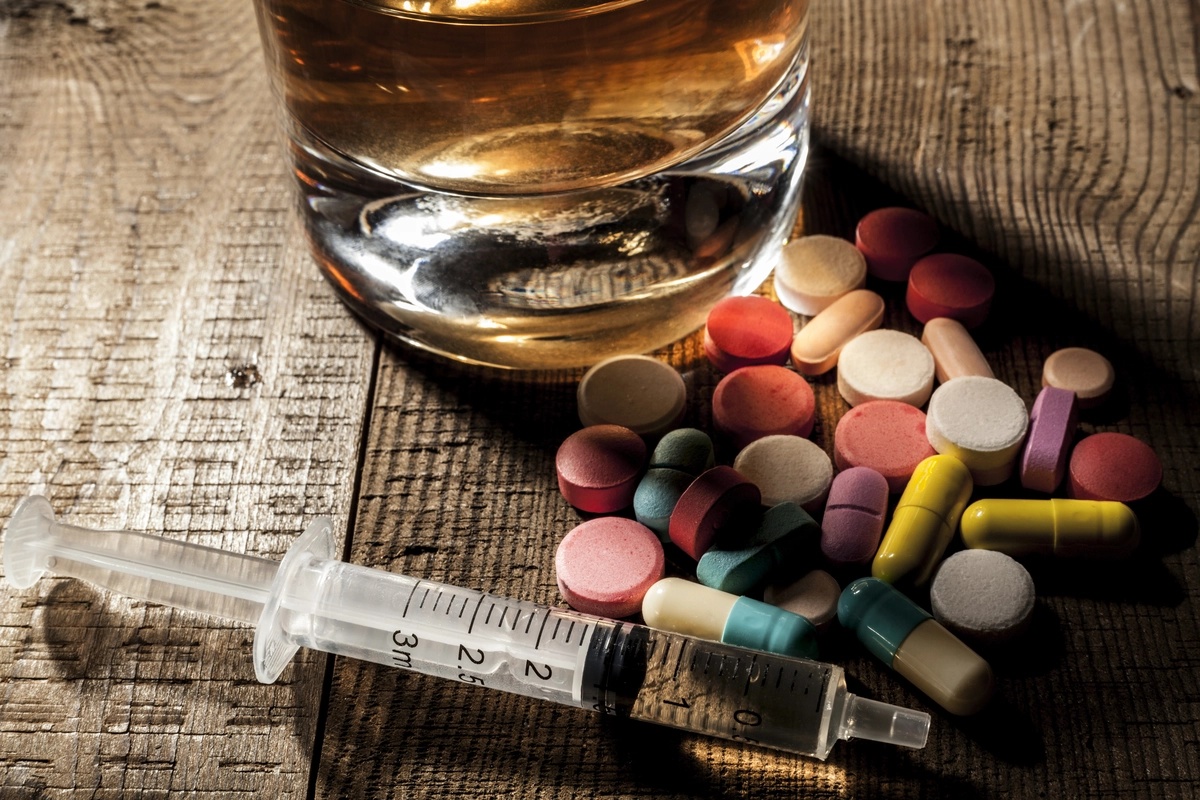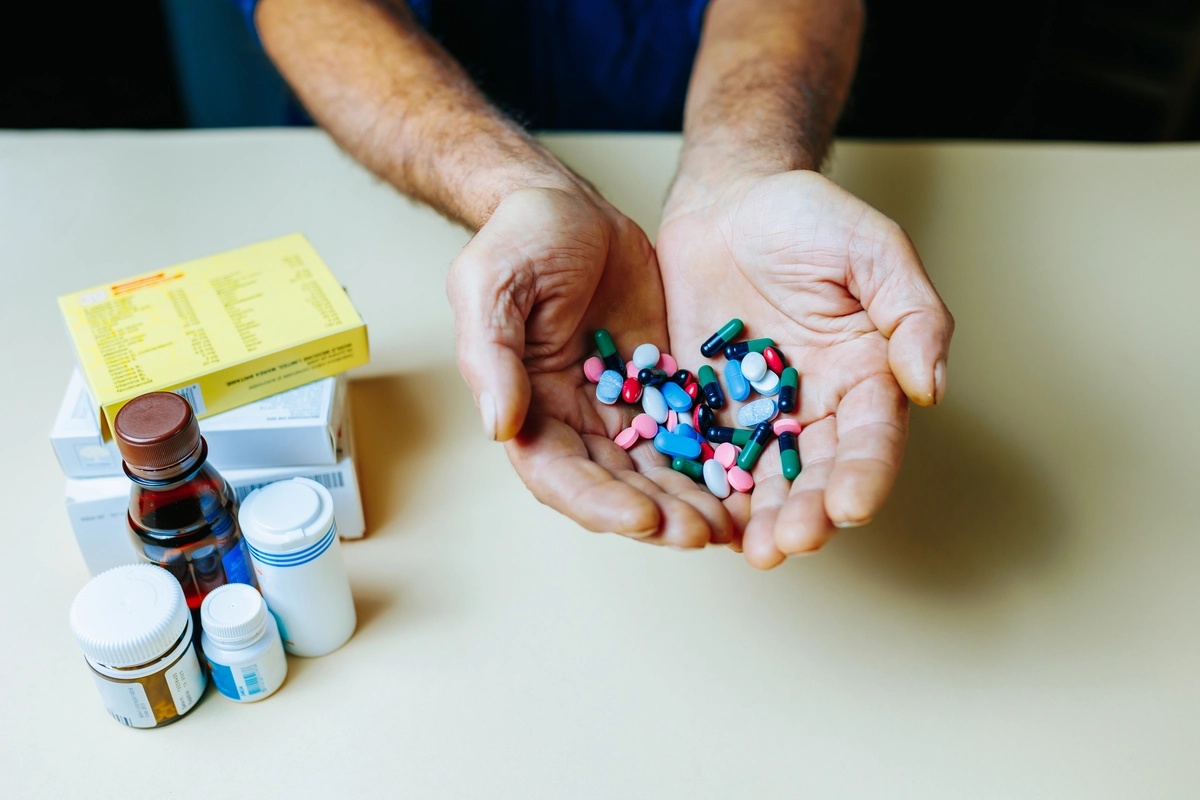Stimulants: Addiction Symptoms, Causes, & Treatment Options


Stimulants are often used recreationally for their “upper” effects, but abuse can quickly spiral into a damaging addiction. From heart issues to mental health risks, including psychosis, the potential consequences of stimulant addiction highlight the need for treatment. Explore the symptoms, causes, and treatment options below, and call The Forge Recovery Center if you or someone you know are ready to enter a new chapter free of stimulants.
What Are Stimulants?
Stimulants are substances that increase activity in the brain and body. They can enhance alertness, attention, and energy levels. Common stimulants include caffeine, nicotine, amphetamines, and cocaine. These substances are often used to improve focus, combat fatigue, and boost productivity — however, they can also pose negative side effects and potential for abuse, highlighting the importance of using stimulants responsibly and under the guidance of a healthcare professional.
What Are Stimulants Used For?
Stimulants are commonly used for enhancing alertness and energy levels. They can help improve focus and concentration, making it easier to stay attentive and engaged in tasks, and are often prescribed for treating conditions like ADHD to manage symptoms effectively.
How Do Stimulants Work?
Stimulants function by increasing the activity of certain chemicals in the brain, such as dopamine and norepinephrine. By doing so, they can speed up messages between the brain and body, leading to improved cognitive functions. These medications also boost dopamine and norepinephrine levels, contributing to enhanced alertness and focus.
When you take stimulants, they work within your body by influencing brain activity and neurotransmitters. They have the ability to alter mood, providing a sense of well-being and increased motivation. Stimulants also elevate energy levels, helping you feel more awake and active throughout the day.
Stimulants play a crucial role in enhancing cognitive functions by promoting better communication between neurons in the brain. This improved communication leads to heightened focus and concentration levels, making some stimulants such as Ritalin and Adderall popular “study drugs.” Still — the addictive potential of stimulants, especially illicit drugs such as meth and cocaine, is a cause for concern and awareness.
What Is Stimulant Addiction?
Stimulant addiction refers to the compulsive and uncontrollable use of stimulant drugs, such as cocaine, methamphetamine, or prescription medications like Adderall or Ritalin. People who are addicted to stimulants often experience intense cravings for the drug, leading to a cycle of use and withdrawal symptoms when not using. This can result in severe consequences on a person's physical and mental health, relationships, and overall well-being. Treatment for stimulant addiction typically involves therapy, support groups, and sometimes medication to help manage withdrawal symptoms and cravings.

Are You Struggling with Mental Health or Addiction?
We Can Help. Call Us Now!
CALL: 877-839-1772
Symptoms of Stimulant Addiction
Stimulant addiction carries a set of physical, psychological, and behavioral symptoms to be cautious of in yourself and your loved ones. Knowing the signs and acting early could be the difference between short-term abuse and addiction, after all. Here’s an overview of the symptoms associated with stimulant addiction:
Physical Signs
When addicted to stimulants, you may experience increased heart rate and blood pressure, which can lead to serious health complications. Dilated pupils are another common physical sign of stimulant addiction, indicating the impact on your body's nervous system. Moreover, weight loss and decreased appetite are often observed due to the suppressive effects of stimulants on hunger cues, another common reason for stimulant misuse.
Psychological Symptoms
Stimulant addiction can manifest in various psychological symptoms, such as anxiety and paranoia, affecting your mental well-being and overall quality of life. Hallucinations may also occur, distorting your perception of reality and causing distress. Lastly, mood swings are prevalent among individuals struggling with stimulant addiction, often leading to emotional instability and erratic behavior.
Behavioral Changes
Addiction to stimulants can result in noticeable behavioral changes, including aggression and irritability, impacting your relationships and interactions with others. Social withdrawal is a common response to stimulant addiction, isolating you from loved ones and support systems. Furthermore, engaging in risk-taking behaviors becomes more frequent as the addiction progresses, putting you in potentially dangerous situations.
How Is Stimulant Addiction Treated?
The treatment process for stimulant addiction typically starts with detoxification and stabilization, before moving on to treatment at an inpatient or outpatient care facility. Aftercare is also a crucial step, centered around helping people in recovery maintain long-term sobriety. Here’s how the process works:
Detox
When undergoing detox, you'll work on flushing the remaining stimulants from your system. This process helps in resetting your body's dependence on these substances. To manage withdrawal symptoms, medical professionals may provide medications to ease the discomfort, as medical supervision is crucial to ensure safety and effectiveness.
Inpatient Care
In an inpatient care setting, you receive 24/7 medical monitoring to address any urgent needs during recovery. The structured environment offers a focused approach to overcoming addiction. Here, you engage in intensive therapy sessions that delve deep into the root causes of your addiction and ways to cope effectively.
Outpatient Treatment
Opting for outpatient treatment gives you the flexibility to attend sessions around your daily commitments. This setup allows you to maintain your routine while working on recovery. You benefit from regular therapy and counseling sessions that provide ongoing support and guidance as you navigate through your journey toward sobriety.
Aftercare
After completing the initial treatment phase, aftercare plays a crucial role in sustaining your sobriety. It involves receiving continued support through various means such as relapse prevention strategies, which equip you with tools to handle triggers effectively. Engaging in support groups and counseling sessions further reinforces your commitment to staying drug-free.
Are You Struggling with Mental Health or Addiction?
We Can Help. Call Us Now!
CALL: 877-839-1772
What Causes Stimulant Addiction?
Stimulant addiction isn’t typically boiled down to one cause. Rather, the causes are multifaceted, with addiction stemming from a mix of genetic predispositions to addiction, environmental factors, and pre-existing mental health disorders. Let’s explore these causes further:
Genetic Predisposition
Genetic predisposition plays a significant role in stimulant addiction, influencing how your body responds to these substances. Your genetic makeup can determine how your brain's reward system reacts to stimulants, making you more susceptible to addiction. Research indicates that certain genes can increase the risk of developing an addiction to stimulants such as cocaine or methamphetamine.
Environmental Factors
Your environment also plays a crucial part in the development of stimulant addiction. Growing up in an environment where drug use is prevalent can normalize substance abuse and increase the likelihood of experimentation. Exposure to stress, trauma, or peer pressure can further contribute to the initiation and continuation of stimulant use. Easy access to drugs and lack of parental supervision can heighten the risk of addiction.
Mental Health Disorders
Individuals with underlying mental health disorders are more vulnerable to stimulant addiction. Conditions like depression, anxiety, or ADHD can drive individuals to seek relief through stimulant use, leading to dependence and addiction over time. The self-medication hypothesis suggests that some individuals may use stimulants to alleviate symptoms of mental illness, inadvertently falling into a cycle of substance abuse.

Effects of Stimulants
Stimulants deliver a rush of energy and euphoria in the short term, but long-term use can have detrimental effects on your heart and mind. Here’s a summary of the effects of stimulant abuse and addiction:
Short-Term Impact
When you consume stimulants, your body and mind experience immediate changes. These substances swiftly alter your perception and behavior, leading to a rapid shift in how you feel and act. The immediate impact of stimulant use can be intense, causing euphoria and a surge in energy levels.
Along with the rush of euphoria, stimulants also bring about decreased appetite. This effect can be dangerous if not managed properly, potentially leading to inadequate nutrition and health issues. Insomnia and restlessness are also common short-term consequences of stimulant consumption, affecting your sleep patterns and making it more difficult to sleep through the night.
Long-Term Effects
As you continue to use stimulants over an extended period, the chronic effects on your physical and mental health become more pronounced. Prolonged use increases the risk of developing tolerance, dependence, and ultimately addiction to these substances. This addiction can have severe consequences on your overall well-being.
Heart Issues
One of the most concerning long-term effects of stimulant abuse is the impact on the heart. Chronic stimulant use can lead to various cardiovascular problems, including irregular heartbeats, high blood pressure, and even heart attacks.
Psychological Effects
Moreover, cognitive impairments are another significant concern associated with prolonged stimulant use, affecting memory, attention span, and decision-making abilities. Psychosis is another severe long-term consequence of stimulant abuse that can manifest as hallucinations, delusions, or disorganized thinking patterns. It significantly impairs your ability to function normally in daily life and may require intensive treatment to manage effectively.
Are You Struggling with Mental Health or Addiction?
We Can Help. Call Us Now!
CALL: 877-839-1772
Types of Stimulants
Stimulants come in a few shapes and sizes: prescription drugs, recreational substances, and natural stimulants like coffee and nicotine. Here’s a breakdown of the types of stimulants and how certain drugs are classified:
Prescription Drugs
When it comes to prescription stimulants, they are specifically designed for medical purposes. These stimulants are tightly controlled and regulated due to their potential for abuse. Using prescription stimulants without a valid prescription is illegal and can have severe consequences.
Moving on to recreational stimulants, these substances are often consumed in various forms such as pills, powders, or injections. The use of recreational stimulants can lead to serious health risks and addictive behaviors. Society faces significant challenges due to the widespread abuse of substances like cocaine and methamphetamine.
Recreational Stimulants
Illegal stimulants like cocaine and methamphetamine are highly addictive and pose significant dangers to individuals' health and well-being. When misused, these substances can lead to devastating consequences both personally and socially. It's crucial to be aware of the risks associated with recreational stimulant use.
Now shifting focus to natural stimulants found in everyday products like coffee (containing caffeine) or tobacco (containing nicotine). These natural sources provide mild stimulating effects compared to their synthetic counterparts. Understanding the benefits and risks of using natural stimulants is essential for making informed choices about their consumption.
Natural Stimulants
Natural stimulants can come in natural forms as well, such as caffeine found in coffee and tea, or nicotine in tobacco products. These substances can provide a temporary boost in energy and alertness. While natural stimulants are generally considered safe when consumed in moderation, they do have the potential for addiction. Caffeine and nicotine, for example, can lead to dependence and withdrawal symptoms if consumed in excess over time.

Street Names for Stimulants
On the street, stimulants are broadly referred to as “uppers,” but each type of drug has its own set of slang. Here’s a quick guide to the street names for common stimulants, including cocaine, meth, and commonly abused prescription amphetamines:
Cocaine
Blow
Coke
Snow
Powder
White Lady
Meth
Meth
Crystal
Ice
Crank
Glass
Speed
Prescription Drugs
Addy
Speed
Uppers
Study buddies
R-ball
Vitamin R
Are You Struggling with Mental Health or Addiction?
We Can Help. Call Us Now!
CALL: 877-839-1772
Consumption Methods
Stimulants are most often taken orally, but can also be inhaled or injected directly into your bloodstream:
Oral
When consuming stimulants orally, you typically ingest them in pill or tablet form. The absorption process starts in the stomach and small intestine. The liver metabolizes the drug before it enters your bloodstream. This method provides a slower onset of effects compared to other routes like inhalation or injection.
One of the risks of oral consumption is the variability in absorption rates among individuals. Factors like food intake can influence how quickly the drug takes effect. Oral ingestion can lead to gastrointestinal issues such as nausea and vomiting, impacting the overall experience.
Inhalation
Inhaling stimulants involves smoking or vaporizing substances for rapid effects. When you inhale stimulants, they enter your bloodstream through the lungs, causing almost immediate effects. This method bypasses the digestive system, leading to a quicker onset of action compared to oral consumption.
The rapid absorption through inhalation results in intense but short-lived effects. However, this method poses risks such as lung damage, respiratory issues, and addiction due to the fast-acting nature of stimulants when inhaled.
Injection
Injecting stimulants delivers an instant and powerful high by directly introducing the substance into your bloodstream. This method involves using needles to inject drugs like methamphetamine or cocaine into veins or muscles for immediate effects. However, injecting stimulants carries significant risks.
Injecting stimulants increases the likelihood of infections at injection sites and bloodborne diseases like HIV/AIDS and hepatitis C. Overdose risk also escalates due to the rapid onset of effects from intravenous administration. The intense rush experienced through injection can heighten the addictive potential of stimulant drugs.
Polydrug Use & Overdose Risks
Polydrug use is dangerous no matter the substances you mix, and it’s important to know the risks. Here’s a summary of the dangers of combining stimulants with other drugs and the potential complications that can arise:
Polydrug Use
When combining stimulants with other substances, you significantly increase the risks to your health. Mixing stimulants with drugs like alcohol or opioids can have dangerous consequences. These combinations can lead to unpredictable interactions and intensify the effects of each substance.
Polydrug use poses a serious threat to both your physical and mental well-being. The effects of mixing stimulants with other drugs can be harmful, leading to adverse reactions that may jeopardize your health. It's crucial to understand these risks before engaging in such behaviors.
The potential for severe interactions and adverse effects is high when you mix stimulants with other substances. Combining different drugs can amplify their individual effects and create new, more potent outcomes. Such interactions can have detrimental consequences on your body and mind.
Potential Complications
When using stimulants, it's essential to recognize the various risks involved. From physical harm like cardiovascular issues to psychological damage such as psychiatric disorders, the dangers are manifold. Understanding these risks is crucial for making informed decisions about your health.
Stimulant use can lead to a range of complications, including the risk of overdose, addiction, and long-term health issues. Overdosing on stimulants can have severe consequences on your body, potentially leading to life-threatening situations. Addiction is another significant concern that can impact your overall well-being.
Cardiovascular problems are a common complication associated with stimulant use. These drugs can put a strain on your heart, leading to issues like high blood pressure and irregular heart rhythms. Seizures are also a potential risk, especially when consuming high doses of stimulants.
Seeking Help for Stimulant Addiction
After recognizing that you or a loved one have a stimulant addiction, the first step is seeking out professional support. Therapists, counselors, treatment centers, and support groups are great places to start. Let’s go over your options once you’ve decided to reach out for help and treatment:
Professional Treatment
When dealing with stimulant addiction, it's crucial to seek professional help. Therapists and counselors specialize in assisting individuals struggling with substance abuse. Rehabilitation centers offer structured programs tailored to address addiction effectively.
Reaching out for professional support can significantly enhance your chances of successfully overcoming stimulant addiction. Therapy sessions provide a safe space to explore underlying issues contributing to substance abuse. Rehabilitation programs offer a comprehensive approach, including detoxification and behavioral therapies.
Support Networks
Support groups play a vital role in the recovery journey from stimulant addiction. Peer support can provide valuable insight and understanding, knowing that others have faced similar challenges. Sharing experiences within a supportive community fosters a sense of belonging and reduces feelings of isolation.
Engaging with support networks offers not only emotional encouragement but also practical advice on coping strategies and relapse prevention techniques. Connecting with individuals who understand your struggles can boost motivation and reinforce your commitment to recovery.

Stimulant Abuse & Addiction Statistics
Stimulant abuse is on the rise, with cocaine and meth use becoming increasingly common both within and outside of the U.S. Below, we’ve rounded up some recent data points related to stimulant abuse to keep you in the loop and aware of the dangers:
Prevalence Rates
Stimulant abuse and addiction are significant public health concerns both in the United States and globally. In the U.S., the prevalence of stimulant abuse, including drugs like cocaine and methamphetamine, has been on the rise in recent years. According to the National Institute on Drug Abuse (NIDA), approximately 4.8 million Americans reported using cocaine in 2021, while over two million reported using methamphetamine.
Globally, stimulant abuse rates vary by region, with countries like Australia, Canada, and parts of Europe also experiencing high levels of stimulant abuse. These substances can have serious health consequences, including cardiovascular issues, mental health disorders, and an increased risk of infectious diseases like HIV/AIDS. Addressing the prevalence of stimulant abuse and addiction is crucial for promoting public health and well-being on a global scale.
Impact on Public Health
The impact of stimulant abuse extends beyond individual users and affects public health on a broader scale. The rise in addiction rates puts a strain on healthcare systems and resources, leading to increased hospitalizations and medical emergencies related to stimulant overdose.
Moreover, the societal implications of stimulant addiction are significant, ranging from strained relationships with family and friends to financial instability due to the costs associated with obtaining these substances. As addiction takes hold, individuals may find themselves isolated and struggling to maintain their daily responsibilities.
Closing Thoughts
You've learned about stimulants, their effects, addiction risks, and treatment options. Understanding the dangers of stimulant abuse is crucial in safeguarding your well-being and that of your loved ones. If you or someone you know is struggling with stimulant addiction, seeking help is the first step towards recovery.
Take control of your health and make informed decisions. Reach out to professionals for guidance and support. Your journey to overcoming stimulant addiction starts with a single step. Remember, you're not alone in this battle. Embrace the resources available to you and pave the way for a brighter, healthier future.
Stimulant Addiction Treatment in Orange County
Stimulant addiction can quickly erode your quality of life, from the detrimental physical and mental symptoms to feelings of isolation and shame that addiction often brings. But you’re not alone in this battle, and help is within reach to guide you toward recovery.
At The Forge Recovery Center in Orange County, we offer a dedicated team of treatment experts and proven therapies to nurture your journey to wellness. Learn more about our therapies below, and if you or a loved one are ready to start healing, please call The Forge Recovery Center at your earliest convenience.
Treatment Modalities We Offer
At The Forge Recovery Center, we offer a number of proven treatment modalities to guide your path to recovery, including:
Case Management
Case management provides crucial assistance to patients, navigating them through the necessary time and resources for recovery, thereby increasing their chances of defeating opioid addiction.
CBT
Cognitive-behavioral therapy (CBT) is an effective method that helps individuals identify and alter harmful thoughts and behaviors related to drug misuse, including fentanyl abuse.
DBT
Dialectical behavior therapy (DBT) supports individuals in recognizing their emotions and seeking positive change, crucial for those with high substance tolerance and struggling with addiction.
EMDR
EMDR therapy targets the traumatic memories that could trigger addiction, using eye movements to process these events and reduce their influence on one’s life.
Experiential
Engagement in experiential activities allows those in recovery to confront past traumas, often a significant factor in opioid misuse, and explore new ways to enjoy life without substance dependence.
Family Counseling
Family counseling is key in strengthening an individual’s fight against fentanyl addiction, with family members playing a significant role in fostering healing and resilience.
Group Therapy
Group therapy fosters a space where individuals can share their experiences and provide mutual support, underscoring that no one is alone in their battle against addiction.
Individual Therapy
Personalized individual therapy sessions address the unique challenges and behaviors of an individual, guiding them toward a life free from drugs and alcohol.
MAT
Medication-assisted treatment (MAT) combines behavioral therapies with approved medications to address opioid use disorders, providing support in times of need.
TMS
Transcranial magnetic stimulation (TMS) uses magnetic fields to stimulate brain cells, offering hope in reducing intense cravings and breaking the cycle of addiction.
Motivational Interviewing
Motivational interviewing helps individuals discover their motivation for change, especially useful for those dealing with cocaine or fentanyl addiction.
Trauma-Informed Care
Trauma-informed care takes into account how trauma symptoms may influence a person’s addiction and recovery, ensuring a compassionate and effective treatment approach.



